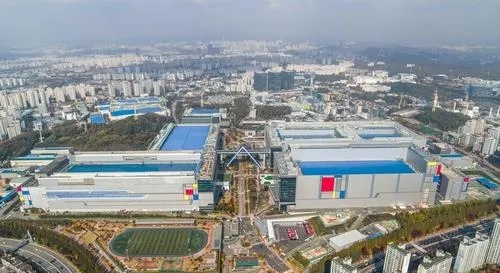How Much Did Samsung Electronics' Q3 Net Profit Rise?

Synopsis
Key Takeaways
- Net profit rose 21% in Q3 to 12.22 trillion won.
- Semiconductor division posted record operating profit of 7 trillion won.
- Operating profit surged 32.5% year-on-year.
- DX division achieved operating profit of 3.5 trillion won.
- Samsung plans to invest 47.4 trillion won annually in facilities.
Seoul, Oct 30 (NationPress) On Thursday, Samsung Electronics announced a remarkable 21% increase in its net profit for the third quarter compared to the same period last year, driven by exceptional performance in its chip division amidst the booming artificial intelligence (AI) sector.
The net profit for the July-September timeframe reached 12.22 trillion won (approximately $8.6 billion), marking a significant rise from 10.1 trillion won reported a year earlier, according to a regulatory disclosure.
Operating profit for the quarter saw a substantial jump of 32.5% year-on-year, amounting to 12.16 trillion won. Revenue also climbed by 8.8% to 86.06 trillion won, as reported by Yonhap news agency.
These results exceeded market forecasts, with analysts predicting an average net profit of 10.13 trillion won, based on a survey conducted by Yonhap Infomax, the financial data subsidiary of Yonhap News Agency.
The semiconductor sector achieved a record 7 trillion won in operating profit, a significant leap from just 400 billion won in the previous quarter, driven largely by the success of high bandwidth memory (HBM) products. This figure also represents a notable increase from the 3.9 trillion won operating profit recorded in the third quarter of 2024.
"The memory division attained record-high quarterly revenue by boosting HBM3E sales while effectively responding to robust demand across various applications," stated the company in a release.
"HBM3E is currently in mass production and is being supplied to all relevant clients, with HBM4 samples also being dispatched to key customers," it added. "A favorable pricing atmosphere and significantly lower one-off expenses, such as inventory value adjustments, contributed to enhanced profitability."
Samsung also reported that its foundry business secured record-high customer orders during this quarter.
The DX division, encompassing mobile, TV, and home appliance sectors, achieved an operating profit of 3.5 trillion won, fueled by the rising popularity of foldable smartphones.
Within the DX division, the mobile segment reported an operating profit of 3.6 trillion won, attributed to the successful launch of the Galaxy Z Fold 7 and improved sales of tablets and wearable technology.
However, the visual display department faced an operating loss of 100 billion won due to what the company referred to as "intensified competition."
Looking to the future, Samsung anticipates that the AI boom will positively impact all its business sectors, including chips and smartphones, in the fourth quarter. The company plans to actively cater to the AI industry's demand with HBM3E, high-density eSSDs, and other cutting-edge memory solutions.
Furthermore, Samsung aims to boost sales of its mobile products, emphasizing its premium lineup of tablets and wearables.
The estimated annual investment in facilities for this year is projected to total 47.4 trillion won, with the semiconductor division accounting for 40.9 trillion won.
Additionally, Samsung disclosed that its cumulative investment in research and development projects reached 26.9 trillion won by the end of September.










